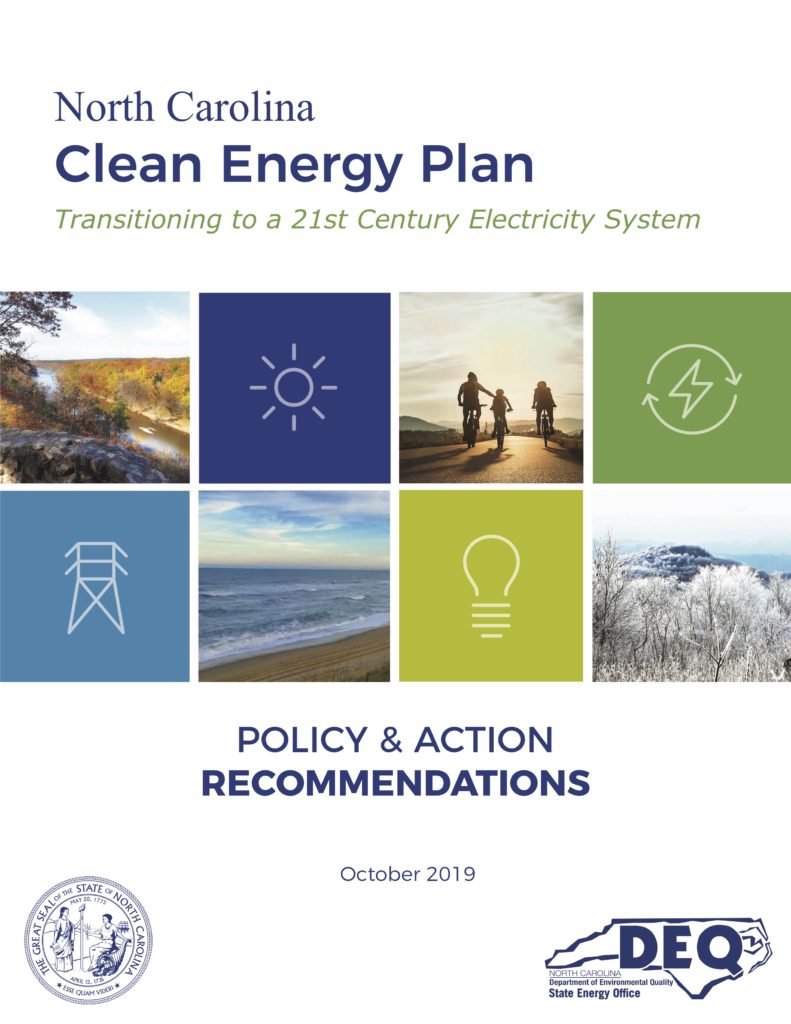Planning an Affordable, Resilient and Sustainable Grid in North Carolina
A unique collaboration will engage stakeholders on our energy future
The NC Clean Energy Technology Center (NCCETC) is a part of a project that will examine storm-related impacts and the cost and benefits of investing in grid resiliency in North Carolina.
North Carolina has received a $300,000 competitive award from the U.S. Department of Energy for a joint project by the N.C. Department of Environmental Quality (DEQ), UNC Charlotte’s Energy Production Infrastructure Center (EPIC), and the NCCETC. The two-year project, “Planning an Affordable, Resilient, and Sustainable Grid in North Carolina,” will include opportunities for interested stakeholders to review the metrics developed by the research team. Active participants will provide input into an advanced grid scenario focused on enabling a more decentralized resilient grid, including micro and mini grids that can support critical services, such as hospitals, in the case of power outages – as recommended in the NC Clean Energy Plan.
The project will provide new tools to evaluate grid resiliency and the economic losses that come from prolonged power outages, as well as how resilience can improve North Carolina residents’ severe weather experience. The goal is to create a model that informs the development of new metrics (for example, economic losses experienced by customers from outages as a result of hurricanes) to help the state and stakeholders better evaluate proposed utility investments within the context of a collective vision for North Carolina’s future grid and the value it needs to provide, according to T&D World.
“The cost to society after a major weather-related disaster can be far greater than the cost required to invest in resilience, but unfortunately, there are not good methods or metrics to evaluate these investments,” said State Energy Director Sushma Masemore.
“North Carolina is pretty vulnerable in particular because of our coastal area,” said Anne Tazewell, NCCETC Special Project Program Manager. “I hope there will be more attention paid to resiliency efforts because, at this point, it’s one of the considerations but not a primary one. In light of predicted increase in these types of storms, it’s good that we’re focused on this now.”
North Carolina Governor Roy Cooper’s Executive Order 80 Section 9, which addresses climate change and the transition to a clean energy economy, requires NCDEQ to lead a process with state agencies to consider how climate change is affecting operations. The NC Clean Energy Plan includes key recommendations and goals to modernize the grid to support clean energy resource adoption, resilience, and other public interest outcomes, as well as develop and implement policies and tools that better align utility incentives with public interest, state policy, and grid needs. See page 82 for more on Grid Modernization and Resilience.

The NCCETC will lead an initial stakeholder meeting this year to seek input into and comment on the technical and economic analysis on two scenarios: Duke Energy’s current grid and the proposed grid improvement plan currently under consideration by the North Carolina Public Utilities Commission, Tazewell said. A subsequent meeting will provide opportunities for stakeholders to consider a third scenario that will include technical and economic analysis considerations of more resiliency, while also taking into account future affordability, reliability and sustainability. Finally, a roadmap that combines the techno-economic analysis and stakeholder input will be developed to help inform future utility resilience-related processes.
EPIC Associate Director Robert Cox said that EPIC, the technical lead for the project, will analyze outage data following major weather-related disasters that have impacted North Carolina. EPIC recently received and began analyzing Duke Energy outage data spanning from January 2015 through December 2018, which includes Hurricanes Florence and Matthew and Tropical Storm Michael. The work ahead will include the evaluation of three power system scenarios: the current grid; some variation of Duke Energy’s proposed grid improvement plan; and a more resilient grid utilizing renewable energy, battery storage, mini and micro grids, while considering what infrastructure is most vulnerable, as well as the value of securing these. The cost of resiliency is difficult to evaluate, but it is estimated to be between $24 billion to $70 billion annually. EPIC will also overlay outage data with unemployment data to consider the relationship between the two under various storm conditions (use cases) to enable the development of illustrative metrics around this topic.
A new report shows Duke Energy ranks third among the nation’s utilities for risks from hurricanes, with most severe risks along coastal Carolina operations and Duke Energy Florida’s Atlantic Coast and central regions.
Duke Energy’s 3-year $2.3 billion proposal, the Grid Improvement Plan (GIP) – which is currently pending before the North Carolina Public Utilities Commission (PUC) – has a number of measures tied to the dollar value of resiliency. The GIP will address seven megatrends facing the utility, including four that directly support increased resiliency:
- Rapid advancement and impacts of technology of renewables and distributed energy resources (DERs)
- Rapid advancement and new capabilities / functionalities of devices and systems that operate and manage the Transmission & Distribution grids
- Increases in environmental commitments from the international, and customer communities
- Significant increase in number, severity and impact of weather events
Sign up to be informed of stakeholder meetings for the Planning a Resilient, Affordable and Sustainable Grid project here, and stay tuned for more updates on the project.
For more information contact:
DEQ State Energy Program: Starlette Hodge, star.hodge@ncdenr.gov
UNC Charlotte EPIC: Rob Cox, robert.cox@uncc.edu
NCCETC: Anne Tazewell, aetazewe@ncsu.edu